

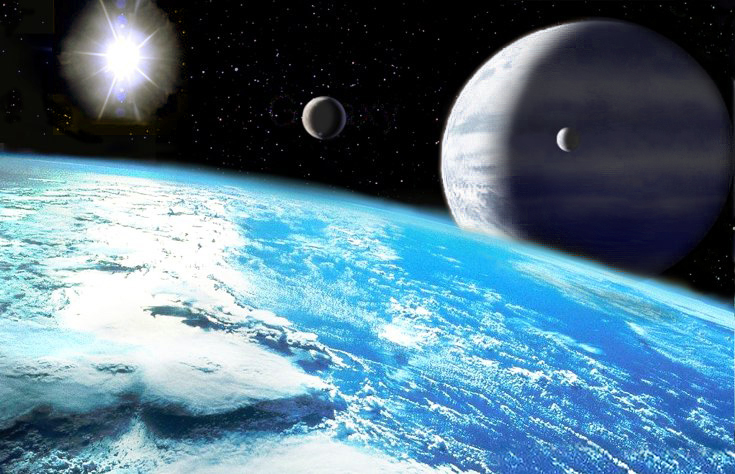
The era of exoplanet discovery began in October of 1995 with the discovery of a Jupiter-mass planet orbiting the nearby star 51 Pegasi. This Jupiter-sized planet, dubbed 51 Pegasi b, was very close to its host star, even closer than Mercury is to our Sun. This surprised astronomers as our solar system is arranged with small rocky planets on the interior and large gas giants like 51 Pegasi b towards the edges. However, it turns out these large, closely orbiting “hot Jupiters” are the easiest to detect, so the discovery of a solar system more like our own would invariably take better technology and more time (Mayor & Queloz 1995).
In December of 1999, the next major milestone of exoplanet discovery was reached when the first multi-planet system was discovered around the star υ Andromedae. However, all of these planets were still Jupiter sized and had rather elliptical orbits compared to our solar system. Thus, these planets would not be able to support life as we know it due to their immense gravity and lack of a solid surface. However, one of the planets, υ Andromedae d was just the right distance from υ Andromedae so that if a large moon orbited the planet, then its surface temperatures could allow for liquid water as seen here. (Butler et al. 1999).
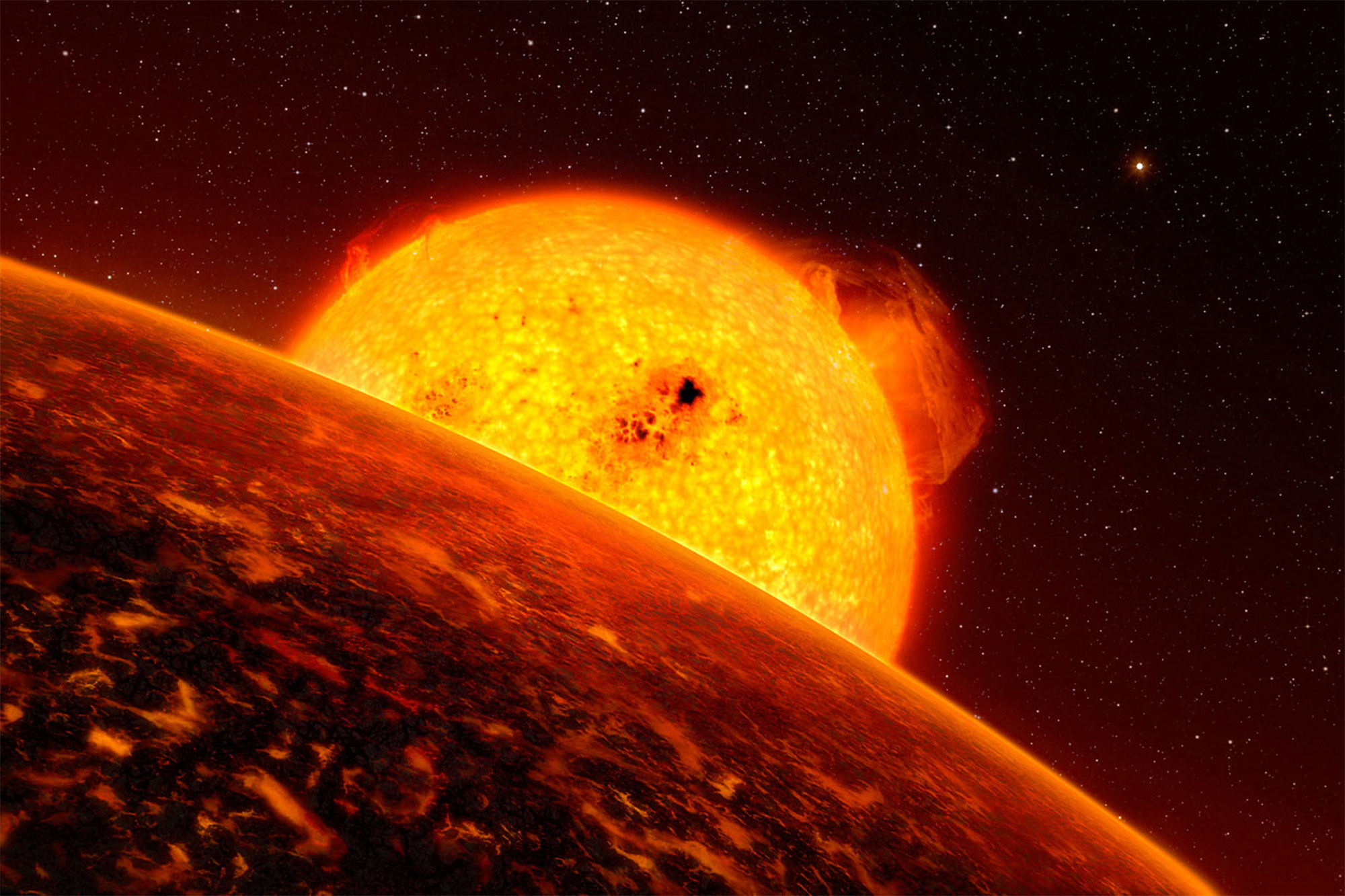
As exoplanet hunting technology improved, scientist began to find smaller exoplanets. By June of 2005 the smallest known exoplanet was Gliese 876 d with a mass of about 7.5 times that of Earth or half that of Uranus, our smallest gas giant. While considered by some to be the first rocky exoplanet discovered, there was too much uncertainty about the planet's size to definetly classify it as a large rocky exoplanet or a small gas giant (Rivera et al. 2005).
By August of 2009 with the discovery of CoRoT-7b scientists were convinced they had discovered a true rocky planet. With a radius only 1.68 times that of Earth CoRoT-7b was dubbed a “Super-Earth”. However, it was very close to its host star and tidally locked, meaning one side of the planet always faced the star while the other half faced away. (A more familiar example of tidal locking is the Earth-Moon system, which explains why we can only ever see one side of the moon.) Because it was tidally locked, the temperature of the hot side was predicted to reach over 2,300 °C and the cold side to fall below -220 °C, assuming the planet didn’t have an atmosphere to evenly distribute heat around the planet. Even with an atmosphere, calculations put the average surface temperature around 1,500 °C. Either way, this planet was an Earth analog in size alone (Léger et al. 2009).

Two years later in December of 2011 with the discovery of Kepler-22b we had the first rocky planet in the habitable zone of a Sun-like star. Calculations put the average surface temperature around a comfortable 22°C (72°F), which would allow for liquid water on the surface. Yet one problem remained. As seen in the artists rendition to the right, Kepler 22b had a much larger radius than Earth, meaning that even though this planet could theoretically support life, it was not a true Earth analog as it had a mass upward of 36 times that of Earth, leading to a much higher surface gravity. If life managed to evolve here, it would have to look drastically different to prevent from being crushed under its own weight. For example, a person who weighed 150 lbs on Earth would weigh close to 1000 lbs on Kepler 22b due to immense gravity. Now we just had to find a slightly smaller planet (Fressin et al. 2011).
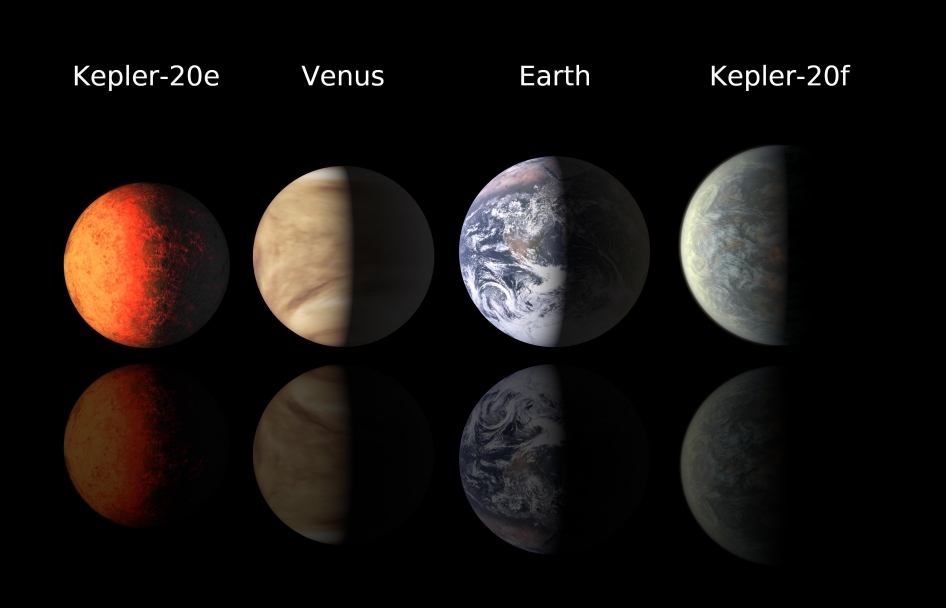
Just 13 days later in December of 2011 Kepler 20e and 20f were announced. As seen in the artist's rendition to the left, Kepler 20e and 20f were nearly Earth sized. Unfortunately, neither of them were in their star’s habitable zone, with temperatures around 770°C for Kepler 20e and 432°C for Kepler 20f. However, these two planets proved that that Earth-sized exoplanets could be discovered with current technology. Thus, it was only a matter of time before we would find a planet that was both Earth-sized and habitable (Borucki et al. 2012).
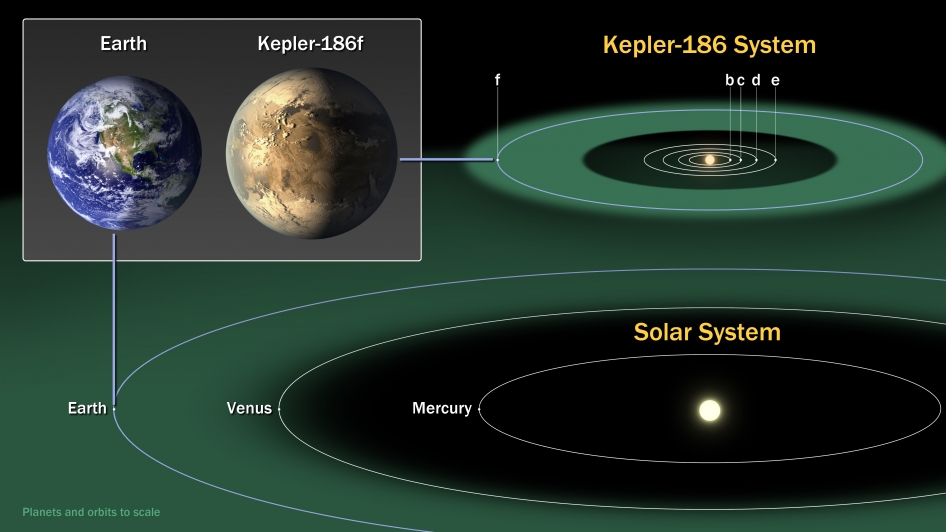
Finally, on April 22, 2014 it was announced that the first Earth-sized exoplanet in the habitable zone of a star had been discovered, Kepler 186f. Kepler 186f has a radius of about 1.11 times that of Earth and has an estimated mass between 0.32 to 3.77 times that of the Earth, depending on its composition (Quintana et al. 2014). It receives about the same amount of light from its star as Mars receives from our Sun, so it is on the colder side, but given the right combination of atmospheric gases, it could have a surface temperature just high enough to support liquid water. Still, just because a planet is Earth-sized and in the habitable zone doesn't guarantee that it will have life on it. The right combination of water and organic compounds in addition to the strength of the planet’s magnetic field and even its plate tectonics all influence whether life would be able arise on this planets (Bolmont et al. 2014).
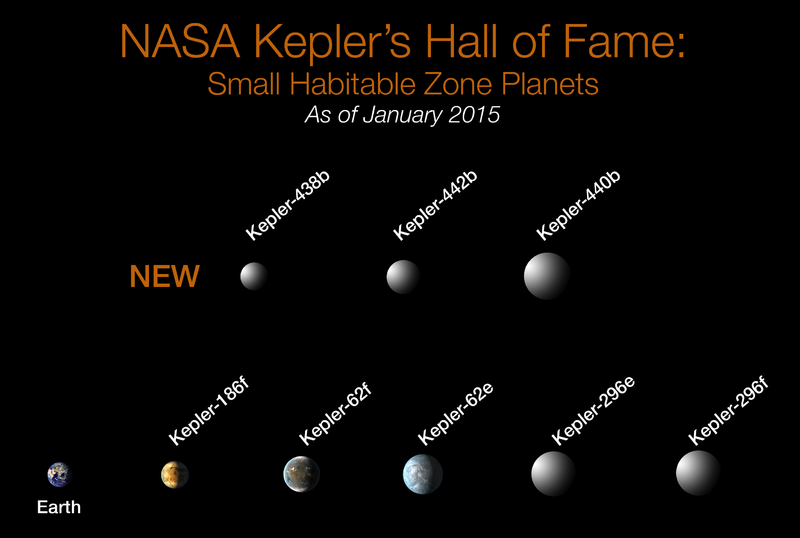
As of May 2015, several more potentially habitable exoplanets have been discovered, including Kepler-438b and Keppler-442b. Undoubtedly, many more Earth-analog planets will be found in the coming decades. Actually detecting life on them though is a vastly more difficult challenge, but one that may just be doable. As our telescopes steadily improve, scientist believe we may be able to indirectly detect life on other planets by detecting unique biosignatures in a planet’s atmosphere such as high levels of oxygen, methane or other organic compounds. This will likely be the best evidence of life beyond Earth for the foreseeable future, until we start sending probes to other star systems or make contact ourselves. The best is yet to come.
Bolmont, E., S. N. Raymond, P. von Paris, F. Selsis, F. Hersant, E. V. Quintana & T. Barclay 2014, arXiv preprint arXiv:14044368.
Borucki, W. J., et al. 2012, The Astrophysical Journal, 745, 120.
Butler, R. P., et al. 1999, The Astrophysical Journal, 526, 916.
Fressin, F., et al. 2011, Nature.
Léger, A., et al. 2009, arXiv preprint arXiv:09080241.
Mayor, M. & D. Queloz 1995, Nature, 378, 355.
Quintana, E. V., et al. 2014, Science, 344, 277.
Rivera, E. J., et al. 2005, The Astrophysical Journal, 634, 625.
Lucianomendez (Own work) [CC BY-SA 3.0 or GFDL],via Wikimedia Commons
ESO/L. Calçada (ESO) [CC BY 4.0], via Wikimedia Commons
NASA/Ames/JPL-Caltech [Public domain], via Wikimedia Commons
NASA/Ames/JPL-Caltech [Public domain], via Wikimedia Commons
NASA Ames/SETI Institute/JPL-Caltech [Public domain or CC0], via Wikimedia Commons
By NASA Ames/W Stenzel [Public domain], via Wikimedia Commons